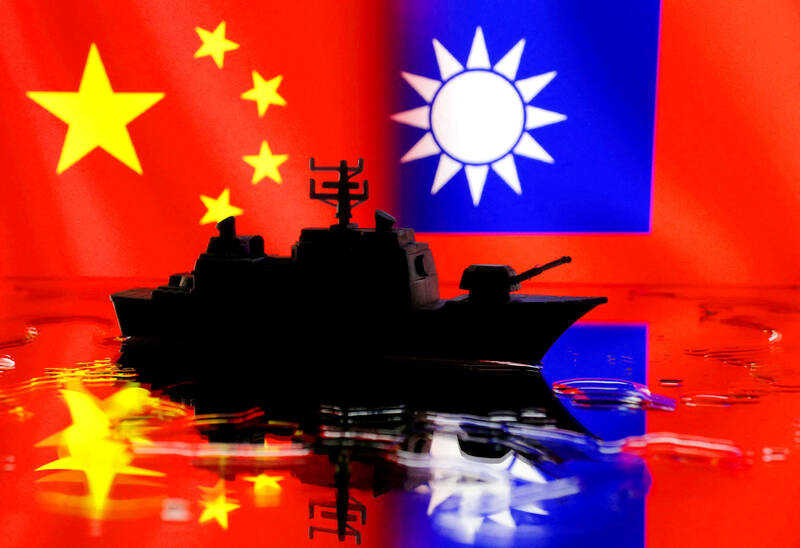This month the government of the People’s Republic of China (PRC) announced a new policy ostensibly aimed at influencing the upcoming presidential election. A top-notch Voice of America (VOA) report observed “China launched a series of influence campaigns against Taiwan last week, unveiling a plan to promote integrated development across the Taiwan Strait.”
The plan, a “demonstration zone,” offers incentives for Taiwanese to live, work and invest in Fujian Province, across the Strait from Taiwan, along with supplies of water, electricity and gas. Using cooperative zones to poach technology and influence Taiwanese is an old plan that has appeared in various forms over the last two decades, sometimes targeting specific industries, as with the Guangdong-Taiwan agricultural experimental zone aimed at Taiwan’s orchid technology. The latest incarnation of this campaign was first drafted in 2021, according to VOA.
INFLUENCE CAMPAIGN

Photo: Reuters
The VOA report correctly identifies the incentives as an influence campaign and presents it in concert with the intimidation program involving PRC aircraft and warships around Taiwan as a “carrot and stick” approach to shaping the election outcome. The military threat too is an old approach the PRC keeps updating, going back to the “missile tests” targeting the 1996 presidential election. Indeed, many analysts suggest that the recent intensification of military intimidation exists to dull Taiwan’s response, so that their alertness drops as they become used to being threatened.
An often-missed aspect of these campaigns centered on Fujian, a friend reminded me on Twitter, is that they signal that Taiwan is subordinate to Fujian Province, attacking its independent identity. During most of the Manchu colonial period — the Qing Dynasty — Taiwan was ruled as a prefecture of Fujian. PRC policy is often intended to replicate that historical colonial relation. For example, the infamous Services Pact that “opened” the PRC actually opened up only Fujian. The intention is obvious.
The more important aspect of this “influence campaign” is that the target is not really Taiwan. The PRC knows Taiwan very well, and its planners are certainly aware that the Fujian demonstration zone will have no more effect on Taiwan than any of its other myriad interactions with Taiwanese. Who is the real target?

Photo: Reuters
It seems clear the ships and planes enclosing Taiwan’s air and sea space are targeting outsiders who might intervene. The “demonstration zone” in Fujian is intended for outsiders as well, to give its servants in the outside world something they can hold up to display Beijing’s “peaceful intentions,” and to keep its noises in the international media.
As many of us noted, the latest round of PRC military exercises around Taiwan, which set the record for aircraft sorties, occurred without any “provocations” from Taiwan. No important US officials were visiting, and no important Taiwan officials were traveling outside Taiwan.
The massive scale of these exercises, which also involved naval activities in the Pacific, clearly show that PRC military exercises are not related to such events. Instead, the PRC holds its normal exercises and if something is happening involving the US and Taiwan, it blames one or both of those nations. It understands that the international media will hype its “anger,” but will never clearly state that exercises are unrelated to anger.
Note that Japan often has exchanges with Taiwan, but the PRC does not normally identify these as a “cause” of its aggression, because one of its goals is to transfer PRC-Taiwan tensions to the US-Taiwan relationship. Clickbait media headlines like “China launches drills around Taiwan in angry response to VP’s US trip” serve the PRC in this goal. They need to stop.
Another target, perhaps the most important, of these activities is the PRC’s own people. Authoritarian leaders are keenly afraid of their lack of popular legitimacy and work constantly to legitimate their actions. Preparing for a likely series of expansionist wars against Taiwan, Japan and other regional powers, the leadership has to demonstrate to its people that it has done all it can to resolve these situations peacefully, to legitimate sacrificing their sons to kill Taiwanese. The people of China, like humans everywhere, do not want war.
HOARDING
Preparing the PRC’s own people for war is one signal. Others abound: hoarding of grain, oil and gold by the PRC is making some observers extremely nervous. April apparently saw the highest volume of grain ever shipped into the PRC, while the media has been reporting that PRC authorities were asking shippers to import grain and sugar as fast as possible. The PRC now hoards over half the world’s grain. Guzzling down cheap Russian oil, PRC oil stocks are the highest in three years.
Maybe these are responses to specific events, such as poor harvests or volatile markets. After all, the PRC has been hoarding grain for years, while PRC firms are infamous for metal hoarding, to the exasperation of PRC authorities. But in the end, whether intended or not, these provide the PRC with the capabilities it needs to support a major war.
Much of the western analysis about how much warning we will have in the event the PRC attacks Taiwan is premised on the assumption it will look like something that would happen in the west. For example, analysts often write that there may be a nationwide blood drive prior to combat. Why? That is necessary only in democracies where compulsion is politically complicated.
The PRC demonstrated with its forced vaccination and testing programs during COVID-19 that it has the will and the staff to compel whatever medical procedures it desires. Once the war begins, it could easily round up specific individuals who match its needs — their identities, blood types, DNA and similar preserved in the extensive medical records it has.
It can even sequester them in its “temporary” COVID-19 quarantine facilities, which still exist, should it so desire, for repeated tapping. Why store blood when it can be sourced at need? Sounds bizarre? Impossible? Selling blood is already a staple income earner for slaving operations across Southeast Asia, run by Chinese gangs.
The analyses of “blockades” are similarly guided by western preconceptions, which imagine the blockades of Germany in the two world wars or of the Confederacy in the American Civil War. The PRC does not need to physically prevent ships from entering Taiwan’s ports. It need merely raise the cost of insurance and shipping to Taiwan to unacceptable levels.
In July, an interesting piece by Joseph Webster at the Atlantic Council argued that “There is something odd about where China is building solar power.” Instead of putting utility-scale solar sites in sun-blessed areas like Inner Mongolia, authorities have ordered that solar panels be installed as wastefully suboptimal distributed solar capacity atop buildings in provinces like Zhejiang and Anhui. Not so great for large-scale power generation, but extremely useful if major utilities are knocked out in war by cyber attacks or similar.
That program is mandated to be finished by the end of this year.
Notes from Central Taiwan is a column written by long-term resident Michael Turton, who provides incisive commentary informed by three decades of living in and writing about his adoptive country. The views expressed here are his own.

US President Donald Trump may have hoped for an impromptu talk with his old friend Kim Jong-un during a recent trip to Asia, but analysts say the increasingly emboldened North Korean despot had few good reasons to join the photo-op. Trump sent repeated overtures to Kim during his barnstorming tour of Asia, saying he was “100 percent” open to a meeting and even bucking decades of US policy by conceding that North Korea was “sort of a nuclear power.” But Pyongyang kept mum on the invitation, instead firing off missiles and sending its foreign minister to Russia and Belarus, with whom it

When Taiwan was battered by storms this summer, the only crumb of comfort I could take was knowing that some advice I’d drafted several weeks earlier had been correct. Regarding the Southern Cross-Island Highway (南橫公路), a spectacular high-elevation route connecting Taiwan’s southwest with the country’s southeast, I’d written: “The precarious existence of this road cannot be overstated; those hoping to drive or ride all the way across should have a backup plan.” As this article was going to press, the middle section of the highway, between Meishankou (梅山口) in Kaohsiung and Siangyang (向陽) in Taitung County, was still closed to outsiders

Many people noticed the flood of pro-China propaganda across a number of venues in recent weeks that looks like a coordinated assault on US Taiwan policy. It does look like an effort intended to influence the US before the meeting between US President Donald Trump and Chinese dictator Xi Jinping (習近平) over the weekend. Jennifer Kavanagh’s piece in the New York Times in September appears to be the opening strike of the current campaign. She followed up last week in the Lowy Interpreter, blaming the US for causing the PRC to escalate in the Philippines and Taiwan, saying that as

The Chinese Communist Party (CCP) has a dystopian, radical and dangerous conception of itself. Few are aware of this very fundamental difference between how they view power and how the rest of the world does. Even those of us who have lived in China sometimes fall back into the trap of viewing it through the lens of the power relationships common throughout the rest of the world, instead of understanding the CCP as it conceives of itself. Broadly speaking, the concepts of the people, race, culture, civilization, nation, government and religion are separate, though often overlapping and intertwined. A government